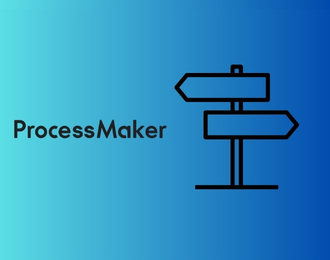What is the Mortgage Underwriting Process?
Mortgage underwriting is the process lenders use to assess a borrower's ability to repay a home loan. In simple terms, it’s how banks decide if you qualify for a mortgage, how much they can lend you, and under what terms.
For example, an underwriter reviews your income, credit history, debts, and the property’s value before approving a home loan.
Without mortgage underwriting, lenders would face high risks of loan defaults, and borrowers could take on unaffordable loans—leading to financial instability for both sides. It’s a crucial checkpoint that ensures responsible lending and protects the housing market.
Key Aspects of Mortgage Underwriting
Mortgage underwriting is a critical step in the home loan approval process, where a lender evaluates the borrower’s financial profile to assess risk and determine loan eligibility. Here are the core components of the process:
-
Credit Evaluation
Underwriters assess the borrower's credit history, score, and repayment behavior to determine creditworthiness. A strong credit profile reduces perceived risk and may lead to better loan terms. -
Income and Employment Verification
The borrower's income is verified through tax returns, pay stubs, or employer verification. Consistent income ensures the borrower can manage monthly mortgage payments. -
Debt-to-Income (DTI) Ratio Analysis
This ratio compares the borrower's monthly debt obligations to their gross income. A lower DTI indicates better financial health and increases the likelihood of approval. -
Asset Verification
Lenders verify bank balances, savings, and investments to ensure the borrower has adequate funds for the down payment, closing costs, and reserves. -
Property Appraisal
The underwriter reviews the property's appraisal report to confirm its value aligns with the loan amount, ensuring sufficient collateral exists for the loan. -
Title and Insurance Checks
Title searches are conducted to ensure the property is free of legal issues, and proof of homeowners insurance is collected to mitigate risk in case of property damage. -
Fraud and Risk Assessment
Underwriters use tools to detect red flags, verify documentation authenticity, and ensure compliance with internal and regulatory guidelines.
Benefits of Mortgage Underwriting Automation
Automating mortgage underwriting can dramatically streamline the loan origination process and enhance accuracy. Here are the top benefits:
-
Faster Loan Approvals
Automation reduces the time needed to analyze financial data, verify documents, and generate risk assessments, enabling lenders to issue approvals within hours instead of days. -
Improved Accuracy and Consistency
Automated systems eliminate human error and ensure consistent application of underwriting rules and lending criteria across all loan files. -
Enhanced Compliance
Automated platforms are built to align with regulatory standards (e.g., CFPB, FHA, Fannie Mae guidelines), reducing non-compliance risks and improving audit readiness. -
Cost Efficiency
By reducing manual labor and processing time, lenders can lower operational costs while increasing loan volumes without additional staffing. -
Better Customer Experience
Borrowers benefit from quicker decisions, real-time application tracking, and fewer documentation requests, improving satisfaction and conversion rates. -
Scalability and Flexibility
Automation tools enable mortgage lenders to handle increased application volumes efficiently, especially during seasonal or market-driven spikes. -
Advanced Risk Assessment
AI-powered underwriting can use predictive analytics and data modeling to more accurately assess borrower risk, allowing for more nuanced loan decisions.
How to Automate the Mortgage Underwriting Process?
Automating the mortgage underwriting process is a game-changer for lenders looking to boost speed, accuracy, and compliance. Manual underwriting often involves reviewing piles of documents, verifying details across systems, and making judgment calls that can delay loan approvals. With FlowForma Copilot, those bottlenecks disappear. Whether you're starting with a simple prompt, a form, or even a voice note, Copilot helps you build a fully structured mortgage underwriting workflow—fast. From setting rules to defining conditions, every step is streamlined to reduce human error and improve decision-making.
Here's how to automate your mortgage underwriting process with ease.
- With FlowForma Copilot, creating a structured mortgage underwriting process is effortless. Provide a text prompt, upload a form or flow diagram, or use voice input to get started!
- FlowForma Copilot automatically structures your mortgage underwriting process using steps, questions, and rules at lightning speed.
- Review your mortgage underwriting process, and once satisfied, click “Build” to bring it to life.
- Open each section to review the questions and rules suggested by Copilot. Click here to define the conditions dynamically to fit your requirements.
- Once done defining, click "OK"
- Define the actions that should take place when they are met. Click “Save” to apply your logic.
- After customizing your mortgage underwriting process with rules and automation, click “Save” to securely store all changes.
- Click “Test Form” to preview how your process functions in a real-world scenario.
- At the top, you'll see the entire mortgage underwriting process is seamlessly structured in minutes with FlowForma Copilot! Thanks to smart rules and automation, your mortgage underwriting process is now fully optimized and ready to deploy — effortlessly transforming the way you work!
Conclusion
In conclusion, the mortgage underwriting process is a critical step where lenders evaluate a borrower’s financial health and the property’s value before approving a loan. We explored how this process ensures responsible lending and why automating it can significantly improve speed, accuracy, and compliance. Using FlowForma Copilot, lenders can easily structure and customize their underwriting workflow with minimal effort—fully answering the question of how to automate the mortgage underwriting process.
As your next step, audit your current mortgage underwriting workflow to spot inefficiencies and areas of manual effort. Ensure your conditions are clear, rules are precise, and all actions are tested before full deployment. Remember: automation is most effective when logic is aligned with lending policies and regulatory requirements.
FlowForma Copilot is designed to simplify and accelerate complex processes like mortgage underwriting. Try it today and experience how quickly you can transform outdated workflows into efficient, automated systems.
.png) By
By 




